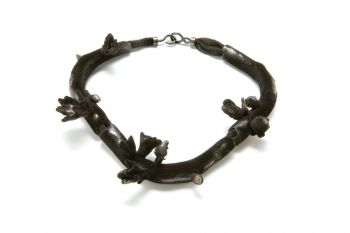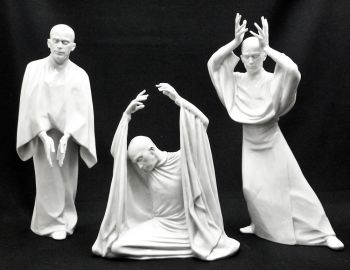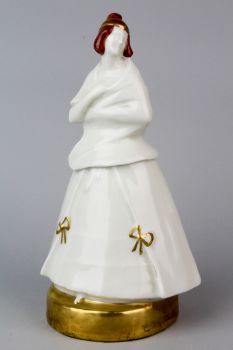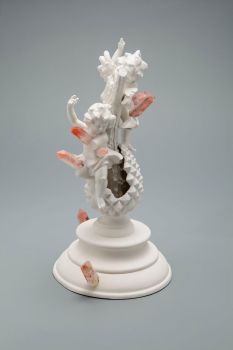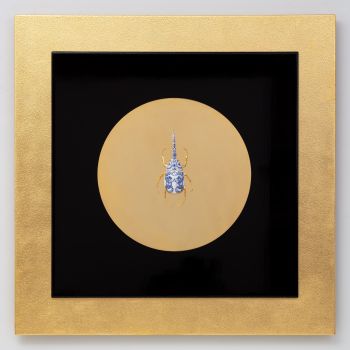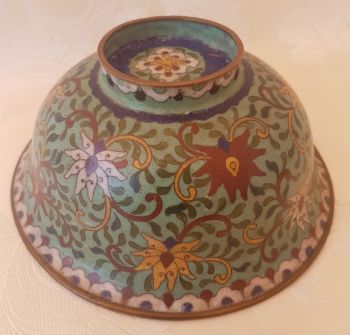Dutch Delftware copying Chinese porcelain
While in the 17th century more and more trading posts were established in the East and Chinese porcelain was exported on a larger scale to Europe, the porcelain capital of the world ‘Jingdezhen’ was already producing porcelain for 3 centuries. From 1602 until 1780 the Dutch East India Company made around 4000 voyages, carrying also a lot of porcelain in their cargos. It is also well known that in Netherlands, in the city Delft, a lot of blue-and-white Chinese inspired wares were produced. Why did Delft potters do so, while in the 17th century there already was such a flourishing trade in the East? In this article, we will discuss the interaction between Chinese porcelain and Dutch delftware (earthenware).
Mysterious Chinese porcelain
In Europe, porcelain was still very much unknown and mysterious in the early 17th century while its admiration spread from the Eastern to the Western world. According to fragments from ‘The travels of Peter Mundy, In Europe and Asia 1608-1667’ , it was thought that the ‘white gold’ “should lay 100 years undergrounded before they came to perfection”, as Mundy stated in 1637 from his voyage from “Taifoo backe unto Macao”.
The material was described as “off a certain white stone, beaten to powder, sifted and kneaded with water into a paste”. Another European philosopher, Francis Bacon, wrote in his Novum Organum of 1620 that porcelain developed from an “artificial cement” when “buried in the Earth a long time”
Transition period
One of the main causes of producing Chinese inspired Dutch delftware bring us back to 1644. In 1644 the transition from the rule of the imperial family Ming (1368-1644) to the Qing dynasty (1644-1912) took place (known as the Battle of Beijing), resulting in a turbulent period in China.
After the conquest of Beijing, pretenders of the Ming branch continued to claim rule over China, maintaining small but persistent strongholds in its southern regions.

A large chinoiserie plate with Transition and Kangxi inspired decoration, 17th century, around 1680-1700, Delft, Holland.
This political shift caused a strong decline of the export of porcelain, especially during the first 3 years after 1644 but also during the following decades. However, huge demand for Chinese porcelain remained under European households. European potters saw an opportunity and started copying Chinese porcelain in earthenware. At the same time, we can see a replacement of Chinese porcelain by Japanese porcelain.
This ‘Transition period’ in China can thus be marked as the start of a large production of Chinese style Dutch delftware. At the worst point of the Chinese civil war in 1653, the export of Chinese porcelain came to a temporary end.
The beginning of Dutch delftware
Although the Dutch did not have a direct mainland trading position in China yet, where the Chinese porcelain could be ordered from directly, they were impacted by the events.
Besides the alternative of Japanese porcelain, the Dutch business- and tradesmen managed to establish 17 Delft factories between 1653 and 1662 (out of the 34 known that are established in Delft)! With no access to kaolin (a soft white clay extracted from quarries), the Delft potters were unable to manufacture true porcelain.
 Tile factory, from a factory tableau in Bolsward, na 1737, Rijksmuseum, Amsterdam
Tile factory, from a factory tableau in Bolsward, na 1737, Rijksmuseum, Amsterdam
The blue and white color scheme was imitated by coating the pieces of earthenware with a white tin glaze, to which they applied distinctive blue paintwork.
The result was that blue wares from Delft were soon recognized as high quality. Moreover, delftware was only at a tenth of the price of comparable Chinese porcelain and thus much more affordable.
Kraak-style porcelain
It is not until 1708 that von Tschirnhaus and Böttger had experimented enough to be able to copy the difficult hard-paste porcelain in Europe. From the second half of the 17th century, we can thus see not only the Chinese style and taste in Delft objects but also exact copied patterns of Chinese porcelain, only this time in earthenware.
 A Wanli kraak-plate, depicting a cachepot, around 1595-1620, Jingdezhen, China
A Wanli kraak-plate, depicting a cachepot, around 1595-1620, Jingdezhen, China
For example, The Netherlands experienced a revival of interest in the so called ‘kraak’-style at the second half to the end of the 17th century. Until the early 1700’s we see kraak-style Delft objects of which the plates are more common but vases and other wares are rather rare.
 A Dutch delft plate with Chinese Wanli Kraak decoration, 17th century, around 1670, Delft, Holland
A Dutch delft plate with Chinese Wanli Kraak decoration, 17th century, around 1670, Delft, Holland
The 'kraak-style' porcelain is a collective name of porcelain produced between 1573-1661, under four different Chinese emperors. Porcelain produced under the last Ming emperor Shunzhi (1644-1661) is called Transition porcelain, but is also categorized as 'kraak-style' porcelain.
Chinese Kangxi porcelain
Also, we see the Chinese Kangxi-style reflected in Delftware, from 1680 onwards. Chinese Kangxi porcelain (1662-1722), called after the Qing Emperor, is known as the highest quality porcelain made in China. One can identify a difference between copying the kraak-style and Kangxi-style in Delft.
Where the kraak-style wares are often copied in full style or even one-on-one, the Kangxi style Delftware typically only contains some Kangxi elements or reflects a European interpretation of the style.
 Transitional late Kangxi (1661-1722) to early Yongzheng period, 'a court in session', Jingdezhen, China.
Transitional late Kangxi (1661-1722) to early Yongzheng period, 'a court in session', Jingdezhen, China.
A reasonable explanation for this difference could be that the Kangxi porcelain was normally available without shortages or restrictions after 1683. So, there was no need to imitate the porcelain exactly as was rather the case for the earlier kraak-style.
In 1683 Formosa, the once so lucrative trading post of the Dutch in Japan, got captured by Emperor Kangxi, chasing away Ming loyalists from the island. From that date on, the Chinese porcelain production and export experienced unprecedented growth and had the opportunity to develop into the highest quality.
 Water colour of VOC-fort Zeelandia at the island Formosa, Atlas Blaeu - Van der Hem
Water colour of VOC-fort Zeelandia at the island Formosa, Atlas Blaeu - Van der Hem
Where to buy Dutch Delftware and Chinese Porcelain?
For the available collection of Dutch Delftware and Chines Porcelain have a look at Verkoulen Oriental & European Antiques. At Verkoulen Oriental & European Antiques, we are passionate about the history of the far east and its influence in Europe. We sell a high-quality Dutch Delftware and Chinese porcelain.
Our collection contains a wide range of 17th, 18th and 19th century antiques. We specialize in high-quality Chinese porcelain and Dutch delftware, but also colonial and small European objects.
This article has been written by Toussaint (T.M.) Verkoulen of Verkoulen Oriental & European Antiques.


